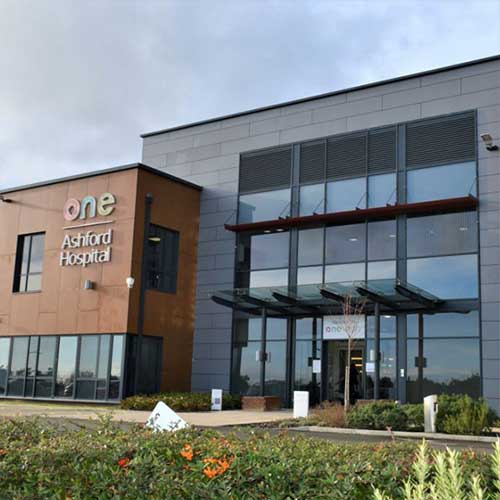Rotator cuff injuries are common and increase with age. They are also common in people in professions that require repetitive movements such as painters, window cleaners or tennis players.
In the majority of cases, a rotator cuff tear develops over time due to wear and tear. However, in some cases, rotator cuff tears occur due to a single injury such as falling off a bike. If that is the case, a medical examination should be carried out as soon as possible to plan treatment or surgery. There are two types of rotator cuff tears:
Partial tear
Also referred as an incomplete tear where one of the muscles that form the rotator cuff becomes damaged or frayed, but does not completely sever it.
Complete tear
Also referred to as a full-thickness tear. This occurs when all of the tendons are pulled from the bone.
What is the Rotator Cuff?
The rotator cuff is a group of four muscles and tendons that connect and stabilise the shoulder joint, keeping the head of your humerus (upper arm bone) firmly in the socket of the shoulder.
Your shoulder consists of three bones; your upper arm bone (humerus), your shoulder blade (scapula), and your collarbone (clavicle). The shoulder is a ball-and-socket joint where the top or head of your upper arm bone sits in the socket in your shoulder blade.
Between the bone at the top of your shoulder and the rotator cuff there is a lubricating sac known a bursa. The bursa enables the rotator cuff tendons to move easily when you move your arm. When the rotator cuff tendons are damaged or injured, this bursa can become inflamed and painful.
Causes and Risk Factors
There are two main causes of rotator cuff tears: injury (acute tear) and degeneration (wearing down over time).
Acute Tear
Acute injuries typically occur from a specific incident such as if you fall down on your outstretched arm or lift something too heavy. This type of tear is more common in younger people and commonly occurs with other shoulder injuries, such as a broken collarbone or dislocated shoulder.
Degenerative Tear
In the majority of cases, tears are the result of a wearing down of the tendon that develops gradually over time. This degeneration occurs naturally, as we age and are more common in the dominant arm. If you have a degenerative tear in one shoulder, there is more of a chance of a rotator cuff tear occurring in the opposite shoulder even if you have no pain.
The risk of developing a degenerative tear increases with the following:
Lack of blood supply
As we get older, the blood supply in our rotator cuff tendons lessens, ,making it harder for your body to repair small tears, which can then leader to larger tears.
Bone spurs
As we age, bone overgrowth (bone spurs) often develop in the shoulder. When lifting your arms, the spurs on the shoulder rub against the rotator cuff tendon. This is knowns as shoulder impingement and overtime can weaken the tendon and cause tears.
Age
People over the age of 60 are more likely to develop a rotator cuff tear.
Repetitive stress
Repetitive movement carried out frequently can put stress on your rotator cuff muscles and tendons. Weightlifting, tennis and rowing are all sporting activities that increase your risk of an overuse tear. Many occupations such as painters or construction workers are also at a higher risk of developing a rotator cuff tear.
Diagnosis of a Rotator Cuff Tear
To discover if you have a torn rotator cuff, your doctor will begin by asking for a history of the injury and will perform a physical assessment of the shoulder. During the assessment, they will check your range of motion and strength. They will also see which movements cause pain to your shoulder and rule out other conditions such as arthritis.
If your doctor requires further testing to confirm the diagnosis, they may carry out the following:
- X-rays that can identify bone spurs and see if the head of your arm bone (humerus) is pushing into your rotator cuff area.
- An MRI scan uses radio waves and a powerful magnet to create detailed pictures of your shoulder, enabling your doctor to identify tears as well as how severe they are.
Treatment of a Rotator Cuff Tear
Treatment for a rotator cuff tear ranges from resting the affected arm to surgery, depending on the severity of the injury. If you have a rotator cuff tear and you continue using it even though it is causing you increasing pain, you may cause further damage. A rotator cuff tear can get larger over time. Receiving treatment as soon as possible, helps prevent the injury from developing.
The goal of any treatment is to restore function and reduce pain. There are several treatment options for a rotator cuff tear with the best treatment option varying from person to person.
In many cases, doctors will first recommend physiotherapy and nonsurgical treatments before considering surgery. Your doctor is likely to start with a combination of several treatments such as:
- Physical therapy to gain muscle and strength in your shoulder
- Medications such as anti-inflammatory drugs to manage pain and swelling
- Applying hot and cold packs to the shoulder to reduce swelling
- At home exercises to restore range of motion
- Rest to allow your rotator cuff to heal
- Cortisone steroid injections into your shoulder joint, which can provide temporary pain relief and reduce inflammation
- Resting the arm and wearing a sling to minimise motion
The majority of patients will experience improved symptoms following nonsurgical treatments.
The main advantage of nonsurgical treatment is that it avoids the major risks of surgery, such as infection and anaesthesia complications. However, avoiding surgery may mean that the size of the tear may increase gradually and everyday activities and exercise may need to be limited.
Surgical Treatment
If your pain does not improve with nonsurgical methods, your doctor may suggest surgery. Continued pain is the key indication for surgery. Other signs that surgery may be an option for you include:
- You have a large tear (more than 3 cm) and the tissue around the rotator cuff is in good condition
- Your symptoms have persisted for 6 – 12 months
- You have significant weakness and loss of function in your shoulder
- Your tear is a result of a recent injury
Surgery to repair a torn rotator cuff commonly includes re-attaching the tendon to the head of humerus (upper arm bone). There are a few options for repairing rotator cuff tears. Your consultant will discuss with you the best procedure for you.
Types of Rotator Cuff Surgery
Arthroscopic Surgery
This procedure involves your doctor inserting a miniature camera (arthroscope) and surgical tools through a small incision on your shoulder to reattach the tendon to the bone. Due to the minimally invasive technique, your recovery time will generally be shorter than it would be with other open surgery.
Open Surgery
Open surgery is a traditional technique used when the tear is larger or more complex. Your doctor will use larger instruments to fix the tear. An open repair is a good option if additional reconstruction such as a tendon transfer is also necessary.
Tendon Transfer
In severe cases, if the tendon is excessively torn to be reattached, the doctor may have to use a tendon from a nearby location in the body as a replacement.
Shoulder Replacement
If the rotator cuff tear is severe enough, you may require surgery to have your joint replaced. This will involve removing the damaged area and replacing it with an artificial joint.
Risks and Complications
Shoulder surgery is generally very safe. However, every surgical procedure comes with a certain level of risk. Possible complications include:
- Anaesthetic reaction
- Bleeding
- Chest infections
- Infection
- Blood clots
- Pain
- Re-tearing
- Nerve damage
It is important you seek medical advice, if you experience any of the following:
- A significant increase in pain
- Dramatically less shoulder movement
- Swelling or inflammation around the wound
- Excessive wound leakage/discharge
- Flu like symptoms such as a high temperature and feeling generally unwell
Outlook
The results following a rotator cuff injury vary depending on the type of injury. In many cases, home treatments and conservative therapies can help patients recover without the need for surgery.
In severe cases of a rotator cuff tear, symptoms may not be eased with non-surgical treatments, and range of motion may not improve without surgery. However, the results following rotator cuff tear surgery to relieve pain are often successful.
Need Help?
If you are experiencing pain in your shoulder, you can be seen by a Consultant Orthopaedic Shoulder Surgeon at One Ashford Hospital, usually within 48 hours. One Ashford Hospital is well placed to see patients with knee injuries from Ashford, Maidstone, Canterbury, Folkestone, Dover and all surrounding villages. To book an appointment, call the hospital direct on 01233 364 022 or email here.




 One Ashford
One Ashford One Hatfield
One Hatfield